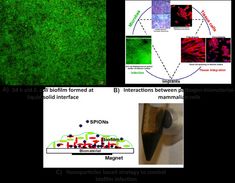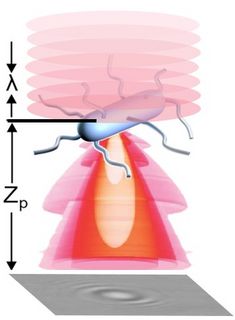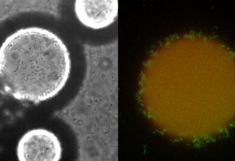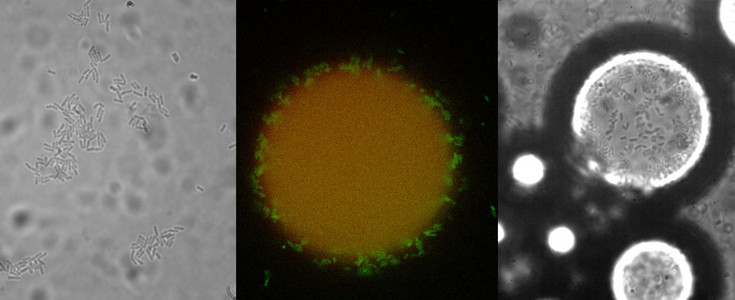
Biofilms at interfaces
Investigations of the role of interface properties on bacteria adhesion and biofilm formation
Contact persons: Prof. Dr. Erik Reimhult and Dr. Guruprakash Subbiahdoss
Bacteria at interfaces (solid-liquid, air-liquid and liquid-liquid) can form communities known as biofilms (Figure 1A). Biofilms are detrimental in different areas such as biomaterial implants and medical devices, biosensors, food packaging, industrial and marine equipment. Antimicrobials or antibiotics are relatively ineffective as the biofilm mode of growth prevents the penetration and subsequent killing of bacteria by antimicrobials [1].
There has been renewed focus on understanding and preventing biofilm formation in the early stages due to the increasingly problematic and ineffective use of traditional antibiotics, due to the increase in and spread of antmicrobial resistance. At BIMat we develop new methods to study bacteria adhesion and early stages of biofilm formation as well as investigate novel surface coatings and strategies to fight biofilm formation.
We are especially interested in the following:
- Development of in vitro microfluidic, holograhic (3D high-speed imaging), fluorescence and freeze-fracture microscopy as well as surface energy measurement methods to quantitatively study bacterial adhesion and biofilm formation at interfaces as function of time (Figure 2).
- Bacteria mobility at interfaces during adsorption, e.g. at liquid interfaces or in flow at solid interfaces (Figure 3).
- Investigation of interplay between pathogen-biomaterial-mammalian cells (B) based on the concept of the race for the surface [2].
- Development of strategies to prevent biofilm infections by exploiting new developments in antimicrobial coatings and nanotechnology (C) [3]
Project overview
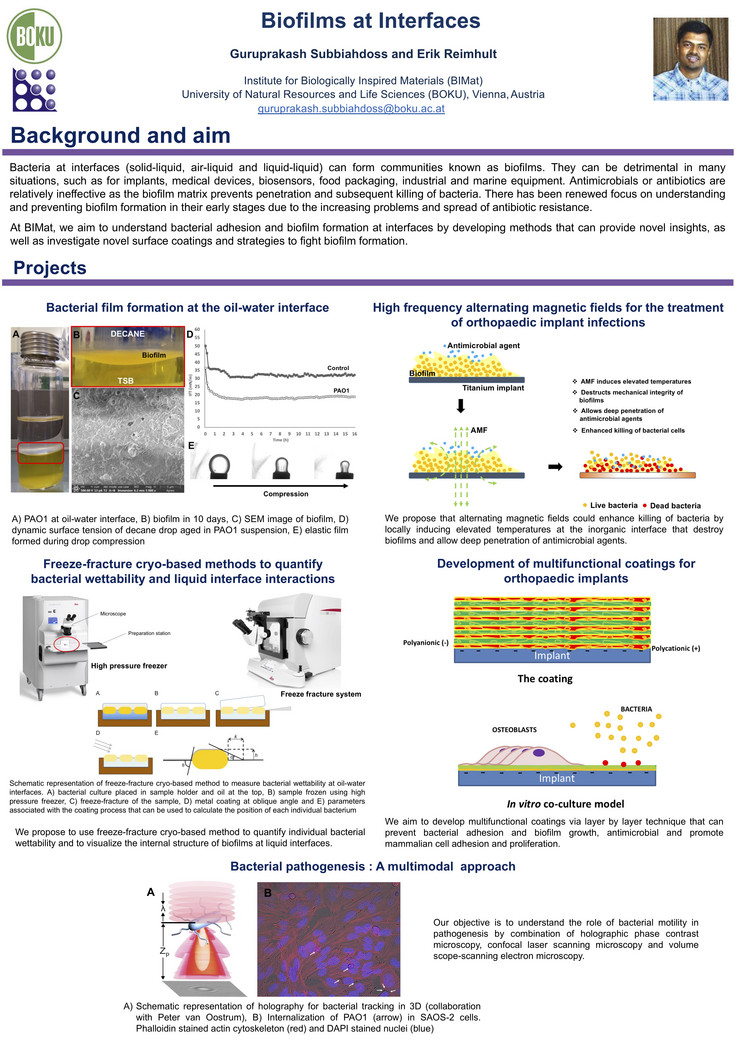
Relevant publications
- Busscher HJ, Van der Mei HC, Subbiahdoss G et al., Science-Translational Medicine 2012; 4 (153):153rv10.
- Subbiahdoss G et al., PLOS One 2011, DOI:10.1371/journal.pone.0024827.
- Subbiahdoss G et al., Acta Biomater. 2012; 8: 2047-2055.

